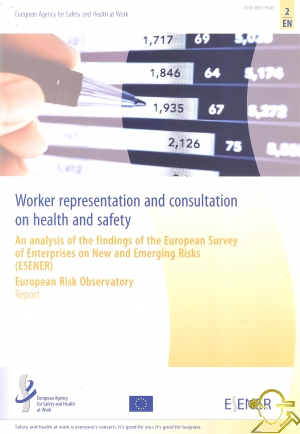 |
 |
 |
Worker Representation and Consultation on Health and Safety 2/EN
|
Book : Worker Representation and Consultation on Health and Safety 2/EN Author : * -- Language : English Library : Health-Safety-Environment Publish Place : Luxemburg ISBN : 978-92-9191-663-4 Publish Date : 00 2012 Publisher : European Agency for Safety and Health at Work Translator : -- Book Type : Report Book Number : 7554 |
 |
INDEX
.Foreword.Executive summary
.Introduction
1.Aims of the study
2.The broad findings of the ESENER survey concerning worker representation on health and safety and on managing psychosocial risks
3.Worker represantation and consultataion and psychosocial risks
4.What is already known about worker representation in occupational safety and health: an international review of the literature
4.1.What do we mean by worker representation and consultation?
4.2.The coverage and effectiveness of worker representation on health and safety
4.3.Characteristics of health and safety representatives
4.4.Activities of worker representatives on health and safety
4.5.Effectiveness
4.6.Worker representation and psychocial risks
4.7.Summary
5.Methodological approaches to the further analysis of the ESENER data on worker representation and health and safety management
6.Summary of the findings of the further analysis of the ESENER data
6.1.Stage 1:Worker represantation
6.2.Stage 2:Health and safety management
6.3.Stage 3:Process, outcomes and inhibitors to OSH management
6.4.Stage 4:The case of psychosocial risks management
6.5.Stage 5:Corroboration with employee representative
7.Some comparisons between countries, sector and regulatory styles
7.1.Comparisons by sector
7.2.Comparisons by country and by regulatory framework type
8.A national case study-the United Kingdom Workplace Employment Relations Survey (WERS) 2004
8.1.Introdaction
8.2.Structure of the analysis
8.3.Worker representation in the United Kingdom
8.4.Workplace characteristics and consultation
8.5.Representation, consultation and occupational ill health
8.6.Summary
9.Some comparions with the European working conditions survey (EWCS) 2005 and 2010
10.Conslusions:implications for policy and future research
11.Referances


